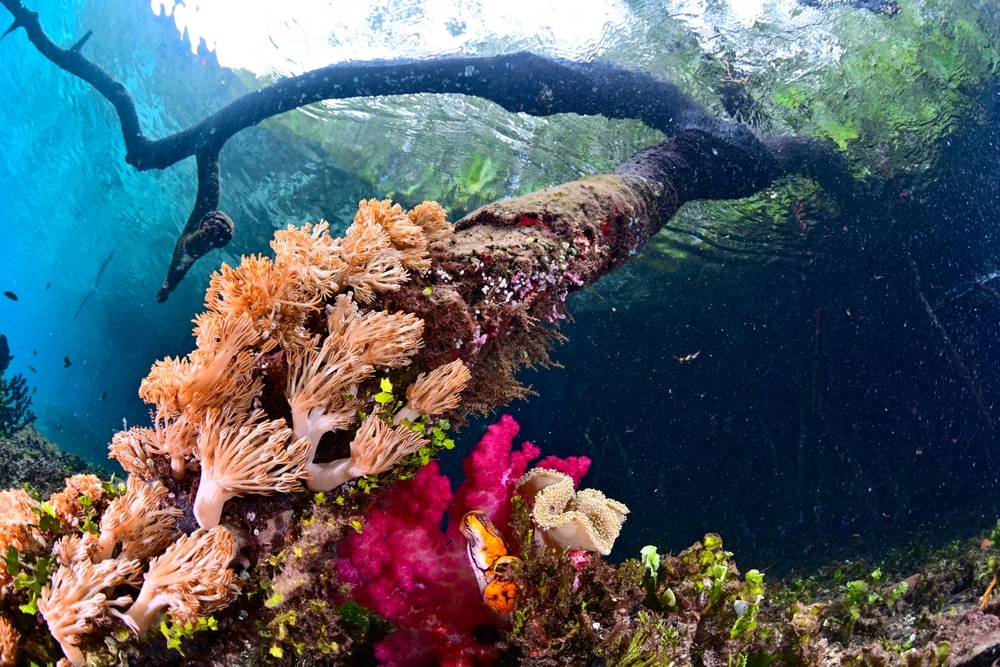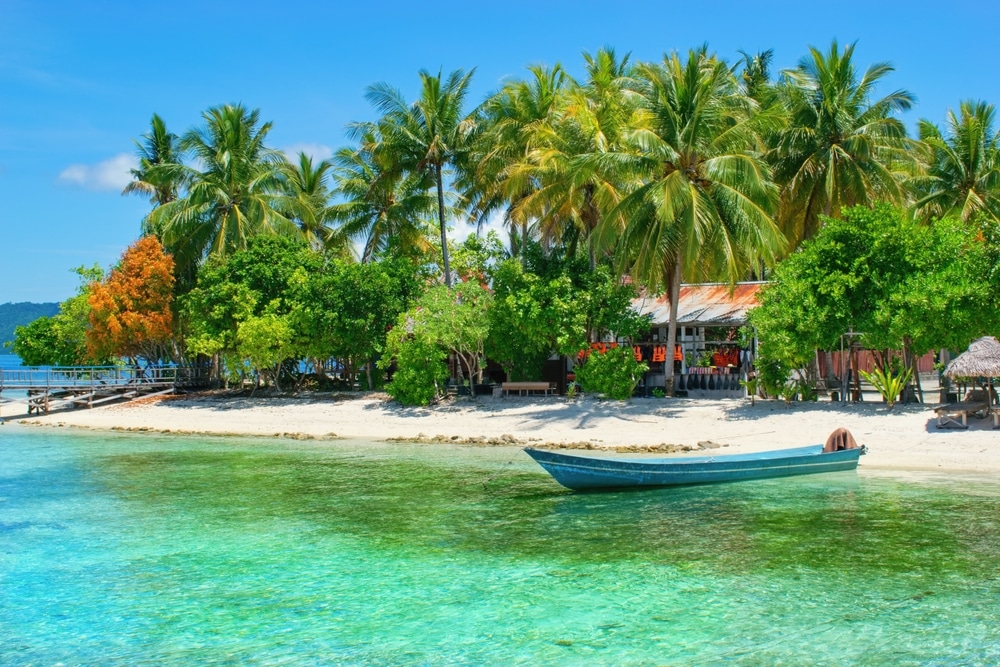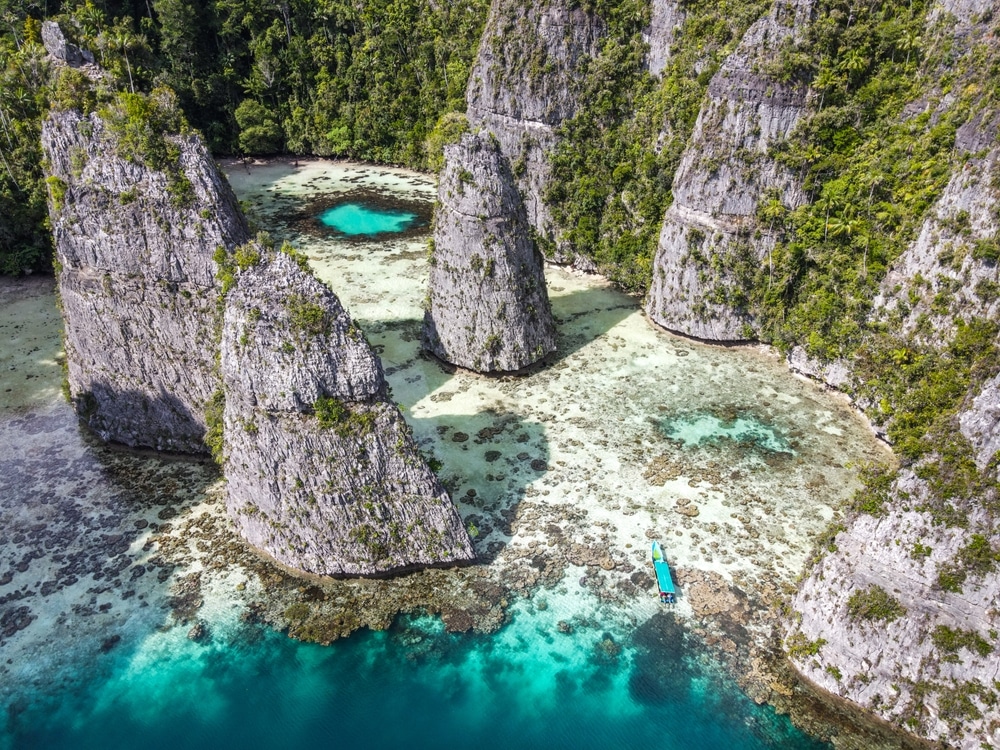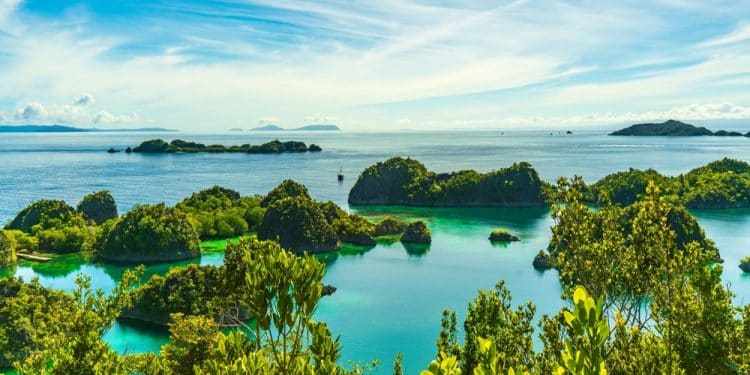If you’ve ever dreamed of stepping into the magical world of Avatar, where nature glows, floats, and teems with vibrant life, Raja Ampat might just be your ticket there. Tucked away in Indonesia’s West Papua province, this remote archipelago isn’t just a travel destination — it’s a living, breathing fantasy world.
Towering limestone islands, clear turquoise lagoons, and some of the most biodiverse marine life on Earth make Raja Ampat feel like something from another planet. Let’s dive into why this place should be on your travel bucket list.
Where Is Raja Ampat?
Raja Ampat — which means “Four Kings” in Indonesian — is a cluster of over 1,500 small islands, cays, and shoals surrounding the four main islands: Misool, Salawati, Batanta, and Waigeo. Located off the northwest tip of New Guinea, it’s not the easiest place to get to — you’ll likely take a flight to Sorong, followed by a boat ride — but that’s exactly what keeps it so pristine.
Despite its remote location, Raja Ampat has been gaining attention from divers, nature lovers, and adventurers worldwide. The lack of crowds is a huge part of its charm. Here, you’re more likely to run into a manta ray than another tourist.
Underwater Wonderland
Let’s start below sea level. Raja Ampat is often called the most biodiverse marine ecosystem on Earth — and it’s no exaggeration. Scientists say the coral reefs here support more than 1,300 species of reef fish, 600 species of coral (about 75% of the world’s known coral species!), and iconic creatures like manta rays, pygmy seahorses, and even walking sharks.
Whether you’re a seasoned diver or someone who just likes to snorkel in shallow waters, Raja Ampat delivers. Sites like Cape Kri, Manta Sandy, and Blue Magic are world-famous dive spots that offer surreal underwater landscapes — from towering coral walls to vibrant schools of fish swirling like clouds. It truly feels like a scene pulled straight out of Avatar.
Even if you’re not diving, the clarity of the water in Raja Ampat is mesmerizing. Visibility often stretches 30 meters or more, so you can see an entire reef while floating on the surface.

Above the Surface: Jungle, Cliffs, and Hidden Lagoons
While Raja Ampat is world-renowned for what lies beneath, its above-water scenery is equally jaw-dropping. Think jagged limestone cliffs rising dramatically from blue lagoons, thick tropical jungles that echo with bird calls, and hidden beaches that feel completely untouched by time.
One of the most iconic views in the region is from Piaynemo. After a short but sweaty climb up a wooden staircase, you’re rewarded with a panoramic view that looks like a real-life painting: emerald green islets dotting a turquoise sea. It’s no wonder photos from this spot often go viral on Instagram.
Kayaking through Raja Ampat’s narrow channels and mangrove forests offers another peaceful way to explore. It’s common to stumble upon hidden lagoons or encounter playful dolphins if you’re lucky. In the stillness of dawn or dusk, you might even hear the haunting call of the Wilson’s bird-of-paradise — a species found only here.
Local Culture and Hospitality
The islands aren’t just about nature; they’re also home to welcoming local communities who’ve lived in harmony with their environment for generations. Visiting traditional villages such as Arborek or Sawinggrai allows travelers to experience local dances, sago-making demonstrations, and warm hospitality.
Many locals now work in eco-tourism, offering homestays that give visitors a chance to truly experience Raja Ampat. Staying in a wooden bungalow by the sea, with no internet and only the sound of waves and birds, is the kind of digital detox most of us desperately need.
The communities are also strong stewards of their environment. Marine conservation efforts, supported by both locals and NGOs, help ensure that Raja Ampat remains as unspoiled as it is today.

Tips for Travelers
1. When To Go
The best time to explore Raja Ampat is during the dry season, which stretches from October to April. During these months, the seas are generally calm, the skies are clearer, and underwater visibility can reach up to 30 meters or more — making it ideal for both divers and snorkelers. Manta rays are also most active from October to December, offering a magical chance to swim alongside these gentle giants.
However, Raja Ampat is a year-round destination, and some travelers prefer the quieter shoulder months of May and September for fewer crowds, though the seas can be choppier. Just avoid June to August if you’re planning lots of boat transfers — winds and rough waters can make island-hopping less pleasant.
2. How to Get There
Reaching Raja Ampat requires a bit of patience, but it’s absolutely worth the journey. First, you’ll need to fly into Sorong (SOQ), a city in West Papua. Most international travelers fly to Jakarta or Makassar, then catch a domestic flight to Sorong — usually with airlines like Garuda Indonesia, Batik Air, or Lion Air.
From Sorong, you’ll take a public ferry or private speedboat to Waisai, the capital of the Raja Ampat regency. The ferry ride takes about 2 to 3 hours and departs twice daily. From Waisai, depending on your final destination, your resort or homestay will often arrange a private transfer by boat to their island.
Keep in mind:
- Plan for at least one overnight stop either in Jakarta or Sorong depending on your arrival time.
- Travel light, but be ready for humidity and the occasional splash on the boat ride!
3. Where to Stay
Accommodation in Raja Ampat ranges from remote luxury to rustic charm — and both options offer incredible nature immersion.
Luxury Eco-Resorts:
- Misool Eco Resort (Misool Island): A leader in sustainable tourism, this private island resort is tucked into a protected marine area. Expect overwater bungalows, world-class diving, and zero plastic waste.
- Papua Paradise Eco Resort (Birie Island): Great for diving and nature, with comfort and excellent food.
Mid-Range to Budget Homestays:
- Kri Island and Gam Island are popular for community-run guesthouses. You’ll stay in wooden stilted huts right above the water, often with meals included and a hammock for good measure.
- Try Yenkoranu Homestay, Corepen Homestay, or Mangkur Kodon for budget-friendly stays that support local families.
Staying in a homestay not only saves money, but also offers a deeper cultural experience. Most include three local meals a day and the chance to chat with your hosts about island life.
4. What to Bring
Since Raja Ampat is remote, shopping options are extremely limited — especially on the smaller islands. You’ll need to bring everything essential with you, especially if you’re staying at a homestay.
Must-Haves:
- Reef-safe sunscreen (regular sunscreen harms coral reefs)
- Insect repellent (especially at dusk)
- Dry bags to protect electronics and clothes during boat rides
- Reusable water bottle (most places offer refills)
- Snorkeling or diving gear (if not provided by your accommodation)
- Water shoes or sandals for rocky shorelines
- Lightweight long-sleeved shirts for sun protection
- Snacks or special dietary items if you’re picky — local cuisine is tasty but simple
- Cash in Indonesian Rupiah — bring enough from Sorong, as ATMs are rare and credit cards are often not accepted outside resorts
Pro tip: If you plan to dive, bring your certification card and logbook. Many remote dive sites require proof of experience due to strong currents.
5. Internet and Connectivity
Think of Raja Ampat as a chance to completely unplug. Internet and phone signal are very limited, especially on the smaller islands. While some eco-resorts may offer patchy Wi-Fi, most homestays don’t. Even when available, connections are often slow and unreliable.
That said, it’s a wonderful excuse to go off-grid. Let family and friends know you’ll be offline during your stay, and bring a good book, journal, or camera to capture the quiet moments.
You can use this digital silence to truly immerse yourself in nature — whether it’s stargazing without light pollution, listening to the chirping of jungle birds, or simply watching the tides roll in and out.

Raja Ampat and Sustainable Travel
One of the best things about Raja Ampat is how seriously sustainability is taken. Marine park entrance fees contribute to conservation and community development. Resorts and homestays work together to ensure tourism doesn’t harm the environment.
Travelers are encouraged to avoid single-use plastics, respect local customs, and participate in reef-safe practices when swimming or diving.
By choosing Raja Ampat, you’re not just seeing one of the most beautiful places on Earth — you’re supporting its preservation for generations to come.
A Journey Worth the Effort
Raja Ampat is not your average vacation spot. It’s not about shopping malls or five-star spas. It’s about raw, untouched beauty. It’s about diving into crystal-clear waters and swimming with sea turtles. It’s about watching the sun rise over jungle-topped cliffs and listening to the wind whisper through palm trees.
And most of all, it’s about feeling small — in the best way possible.
If you’ve ever looked at the floating mountains of Pandora and wished they were real, Raja Ampat might just be the closest thing we have. It’s a place where nature still calls the shots, and that’s what makes it so magical.
Curious about more wild and untamed traveling destinations? Make sure to read them here!



